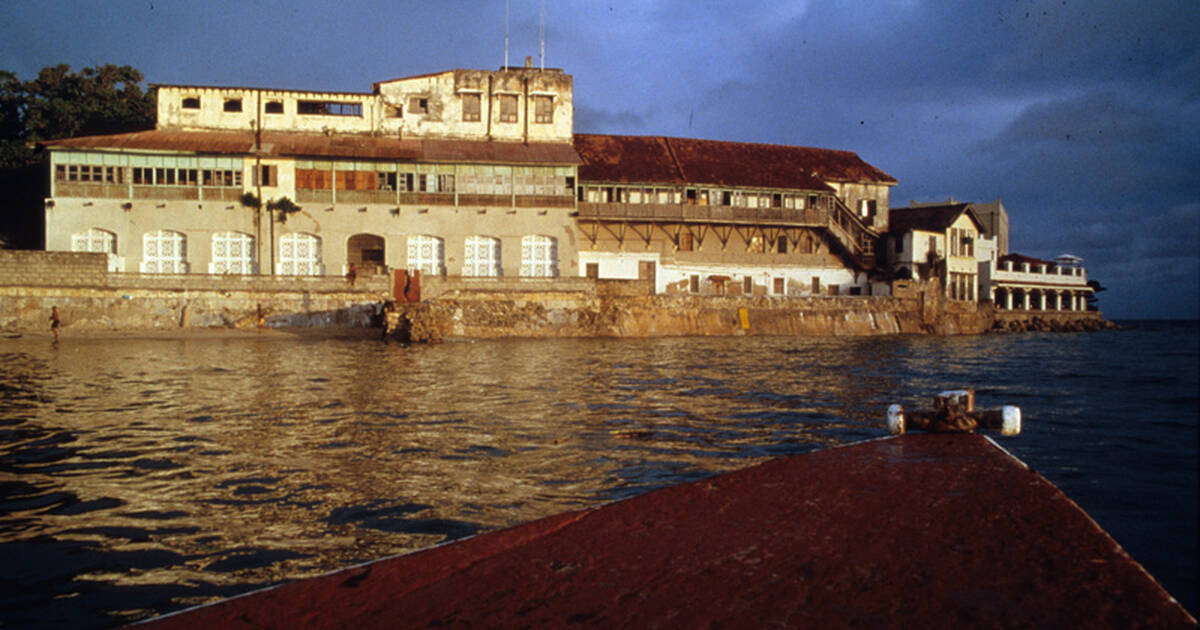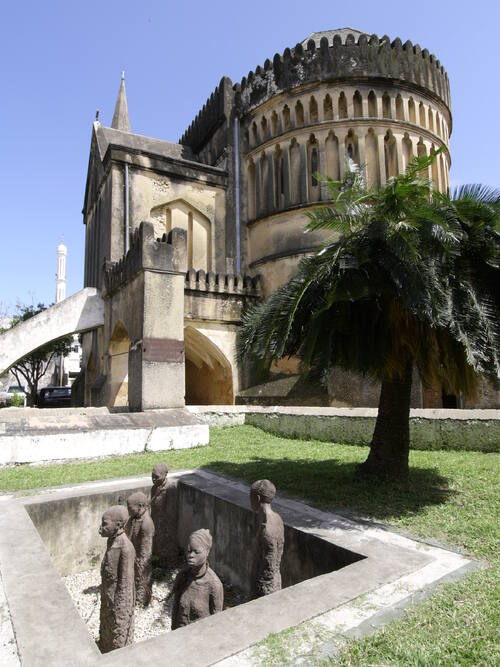Once a bustling center of trade and culture, Stone Town stands as a living museum embodying centuries of history. Wander through its labyrinthine alleys to witness the blend of African, Arab, Indian, and European influences. It’s no wonder this unique place earned its place on the UNESCO World Heritage list in 2000.
Rooted in the 19th century, Stone Town offers a glimpse into Zanzibar’s storied past. With over 1,700 historic buildings, the town showcases the intricate door carvings and diverse architectural styles that tell tales of its vibrant trading era. Stone Town not only preserves the heritage but also captivates anyone who steps into its cobbled streets.

Exploring the Rich History of Stone Town in Zanzibar
Stone Town’s history dates back to the 19th century when it became a key trade hub. Merchants from different continents came to exchange goods and ideas. This bustling town saw a mix of Arab, Persian, Indian, and European traders. This blend of cultures has left a lasting imprint on its architecture and daily life. Stone Town truly represents a melting pot of civilizations.
The Omani Arabs had a significant influence in shaping Stone Town. They constructed many majestic stone buildings, which stand proudly today. Among these is the House of Wonders, the first building in East Africa to have electricity. The stunning Forodhani Gardens, located by the waterfront, is another popular attraction. Both sites offer glimpses into the town’s colorful past.
The town also played a crucial role in the global spice industry. Zanzibar, often referred to as the “Spice Island,” contributed to the world’s supply of cloves, cinnamon, and nutmeg. This agricultural wealth brought immense prosperity. With wealth came the construction of beautiful mansions and public buildings. These structures still echo the town’s opulent days.
Stone Town’s rich history isn’t just confined to its buildings. Walking through its narrow streets, one can sense the stories of the past. The bustling marketplaces, where traders once haggled over prices, still operate today. The local Swahili culture thrives amidst modernity. Visitors can enjoy traditional music and dance performances that celebrate Zanzibar’s vibrant heritage.
Discover Stone Town’s Origins and Evolution as a Major Trade Center
Stone Town originated in the early 19th century as a modest fishing village. With its strategic location off the East African coast, it quickly attracted traders from Arab, Persian, and Indian backgrounds. These traders saw the potential of this small town and began establishing their trading posts. This led to the town’s rapid development and transformation into a bustling trade hub. It wasn’t long before European merchants also sought their fortune in this vibrant market.
The trade in spices, particularly cloves, played a significant role in Stone Town’s rise. Cloves from the Spice Islands were highly prized and exported to various regions. This spice trade not only brought prosperity but also bolstered the town’s significance in the global market. Along with spices, Stone Town became known for its trade in ivory, slaves, and precious metals. The diverse goods traded here attracted a variety of traders, each leaving their mark on the town.
As trade expanded, so did Stone Town’s infrastructure. Magnificent stone buildings replaced the earlier wooden structures, showcasing a blend of architectural styles. Ports were developed to handle the increasing maritime traffic. These improvements made Stone Town a prime location for merchants from around the world to converge. The bustling markets and vibrant streets echoed the town’s lively trade activities.
The legacy of Stone Town’s evolution as a major trade center is still evident today. The labyrinth of narrow alleys, bustling markets, and historic buildings reflect its rich past. Visitors can explore the old trade routes and see the remnants of ancient trade posts. Museums and heritage sites offer insights into how the town became the thriving trade center we know. Stone Town remains a testament to Zanzibar’s historical and cultural significance in the world of trade.
The Architectural Marvels of Stone Town
Stone Town is renowned for its stunning architectural wonders that seamlessly blend various cultural influences. These buildings showcase a rich fusion of African, Arab, Indian, and European styles. Walking through the narrow streets, visitors are captivated by intricately carved wooden doors. Many of these doors feature beautiful brass studs and elaborate patterns. Each design tells a unique story of the town’s diverse history.
Among the town’s notable structures is the House of Wonders, a grand palace constructed in 1883. This iconic building was the first in East Africa to have electricity and an elevator. It now serves as a museum, offering insights into Zanzibar’s heritage. The palace’s large, open terraces provide stunning views of the Indian Ocean. These features make it a must-visit for those exploring Stone Town.
Another architectural gem is the Old Fort, also known as Ngome Kongwe. Built by the Portuguese in the 17th century, it later served as a defense structure for the Omani Arabs. Today, the fort hosts cultural events, including the annual Zanzibar International Film Festival. Visitors can explore its ancient walls and learn about its historical significance. The fort’s spacious courtyard often serves as a venue for concerts and performances.
Stone Town’s narrow alleyways are lined with Swahili houses that exemplify traditional craftsmanship. These homes, with their whitewashed coral rag walls and red-tiled roofs, are a sight to behold. Many buildings are adorned with lush green balconies that offer a cool respite from the tropical heat. The small, shaded courtyards inside these homes provide peaceful retreats. These elements collectively contribute to the town’s charming and picturesque appearance.
Stone Town’s Status as a UNESCO World Heritage Site
In 2000, Stone Town was designated as a UNESCO World Heritage Site, recognizing its unique cultural and historical significance. The town stands as a symbol of Swahili coastal trade and culture. Its well-preserved architecture and urban fabric were key factors in achieving this status. UNESCO acknowledged the blend of diverse influences that the town showcases. Its streets and buildings narrate the tales of its storied past.
Being a UNESCO World Heritage Site offers numerous benefits to Stone Town. This status helps protect and preserve its invaluable heritage. It also attracts international tourists, boosting the local economy. Increased tourism creates more job opportunities and supports many small businesses. This recognition brings global awareness to the town’s rich cultural landscape.
The World Heritage status also imposes certain responsibilities. Stone Town must adhere to strict preservation guidelines set by UNESCO. Regular monitoring and maintenance of historical sites are essential. This ensures that the town retains its authenticity and charm. Conservation efforts often involve collaboration between local authorities and international experts.
Tourists visiting Stone Town can explore various UNESCO-listed sites. These include ancient forts, palaces, and vibrant marketplaces. Each site offers a unique glimpse into the town’s rich history and cultural diversity. Guided tours provide in-depth knowledge and interesting anecdotes. Walking through these sites, visitors can truly appreciate the town’s heritage.
Key Takeaways
- Stone Town is a UNESCO World Heritage Site since 2000.
- It blends African, Arab, Indian, and European influences.
- The town’s architecture includes ancient forts and palaces.
- It played a vital role in Swahili coastal trade.
- Tourism boosts the local economy and preservation efforts.














